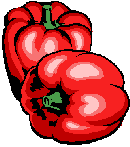|


Also call:
Chinese Parsley, Cilantro, Daun Ketumber, Hara Dhania, Pak Chee, Yuan Sai
 | DESCRIPTION
|
Coriander is an all round plant which
grows up to 1cm in height with leaves that are dark green and it looks like
Italian parsley. It has lacy flowers and seed clusters, but the seeds will
fall when its ripe. The seeds comes in a form that is round and
bleached looking in colour, also have a spicy flavouring and it gives off
fragrance when dried.
 | HISTORY AND ORIGIN
|
Coriander plant is native to the
Mediterranean region and was used in early Egypt and it was also referred to
in the Bible and Sanskrit literature. Coriander was then introduced to
England by the Romans as the first herbs to be grown in America. The Pliny
named this plant 'coriandrum' to derived from koros, which means bugs, due
to the fetid smell of the leaves and the unripe seeds.
 | BUYING AND STORAGE
|
When buying coriander choose those that
are fresh looking not wilted. Fresh coriander can store up to 3 days
in a dry plastic bag if kept away from wet area. The seeds of the
coriander can be bought whole mainly from the chinese shops. Whole
seeds can be store easily and it holds their flavour where ground coriander
loses its aroma very quickly.
 | PREPARATION AND USE
|
Wash and chopped coriander plants as a
garnish, stuffings, soups, braising dishes. Other countries like
Thailand and India used the whole plant as a cooking herbs in the sauces and
curries. Powder form can be used to flavour fish, chicken and meat
dishes. This spice can be used in cakes, gingerbread, biscuits,
pastries, bread, and can also be a sprinkle spice over apples, pears and
peaches while baking.
|




